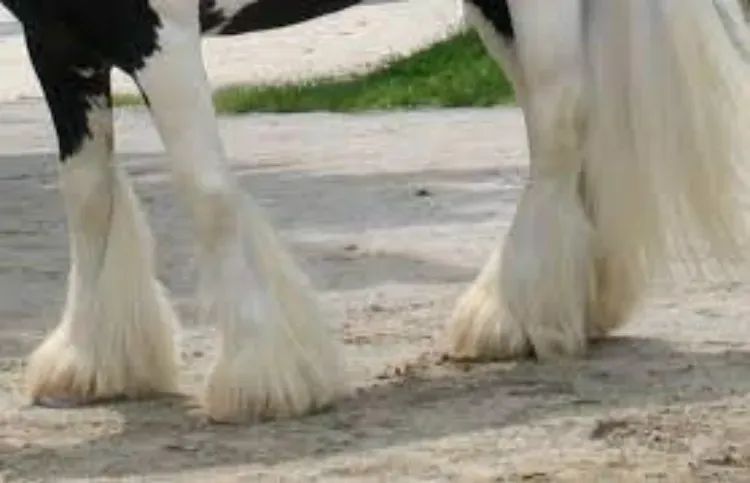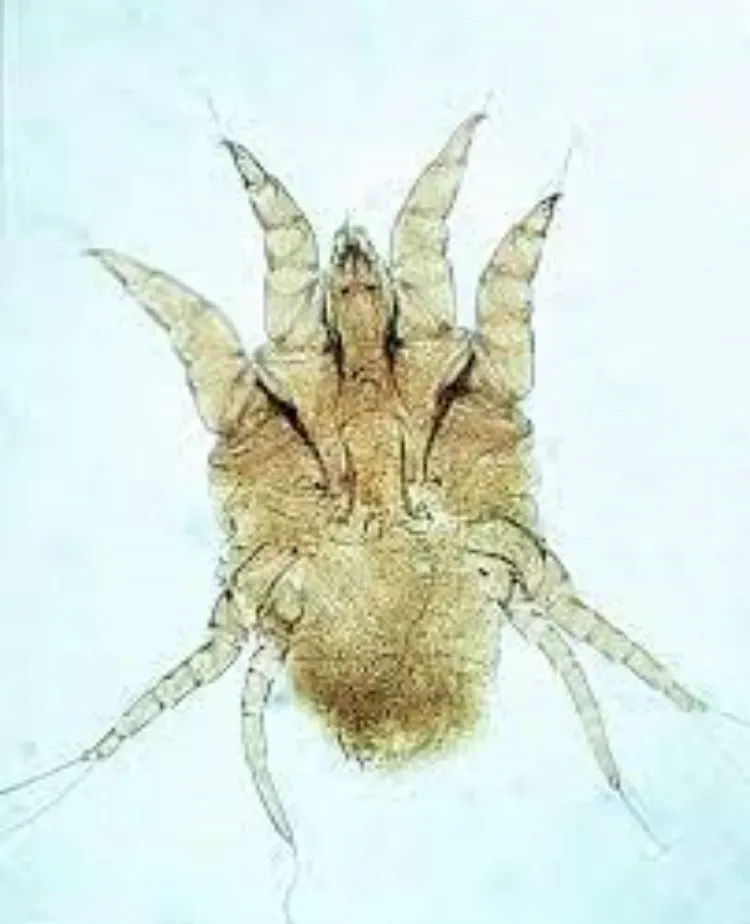
Horse mites (Chorioptes Equi) cause Chorioptic mange. They will be hard to detect as they are about 0.3mm long but will cause your horse extreme discomfort.

Chorioptes Equi / horse mite
Horse Mite Life Cycle
These mites hatch from eggs laid on your horse’s skin. They feed on dead skin cells and can live in a stable for about 70 days without their host horse being present. This means reinfection of your horse is very easy.
Cobs are particularly likely to suffer from Mites
Mites prefer the lower leg of heavily feathered cobs. However, they can spread over the whole body and also affect other horse types.
How do I know my Horse has Mites?
Some horses have mites and show no signs of an infection, but others have an allergic reaction to mites and infections will cause distress.The signs are through the stamping and rubbing of legs. Legs become scabby and the constant rubbing causes localised bleeds.
Mites are often more of a Problem in Winter
Unclipped stabled horses are the most likely to catch mites.
Controlling Mites
Follow this list to eradicate the problem:
- All horses on the premises must be treated as some horses have mites but show no signs of an infection
- Stables must be totally cleaned and disinfected
- These stables must not be used for at least 70 days
- As an extra precaution rugs, numnahs, horse boots, etc. must be cleaned and disinfected

Remove Feathers
The products used to kill the mites must reach the skin so it is wise to completely remove feathers below the knee.
Controlling mites on a horse with considerable feathering will be a challenge.
Treating Mites while stables are being disinfected:
- Clip the legs below the knees and apply selenium sulphide anti-parasitic shampoo that will also remove dead skin crusts
- Give an oral ivermectin horse wormer at this time
- Repeat the anti-parasitic shampooing 10/14 days later to kill any mites that have hatched after the first treatment, but do not repeat the oral horse wormer
- Regularly use selenium sulphide shampoos to keep the mites at bay
Your horse may have Crusty areas of Scurf after the infection is eliminated
These areas are usually behind the knee and in front of the hock. Aqueous creams will help if these areas are chapping.
If the Mite problem can not be controlled contact your Vet
There are no licensed veterinary products to treat horse mites. Your vet might recommend:
- Fipronil front line dog/cat flea spray applied to the horses’ legs, and this is expensive due to the amount required
- Two dectomax injections within a three-week interval and follow-up injections three to six months later

